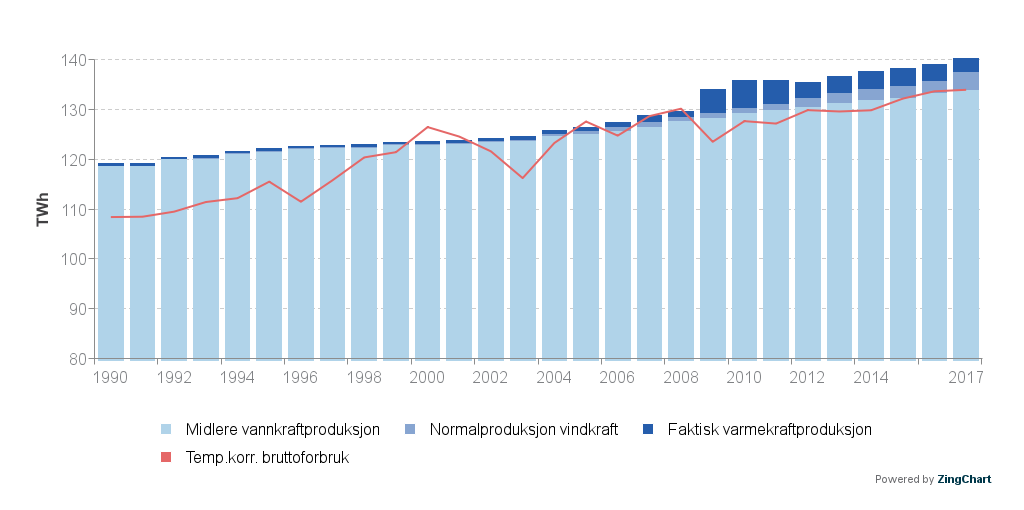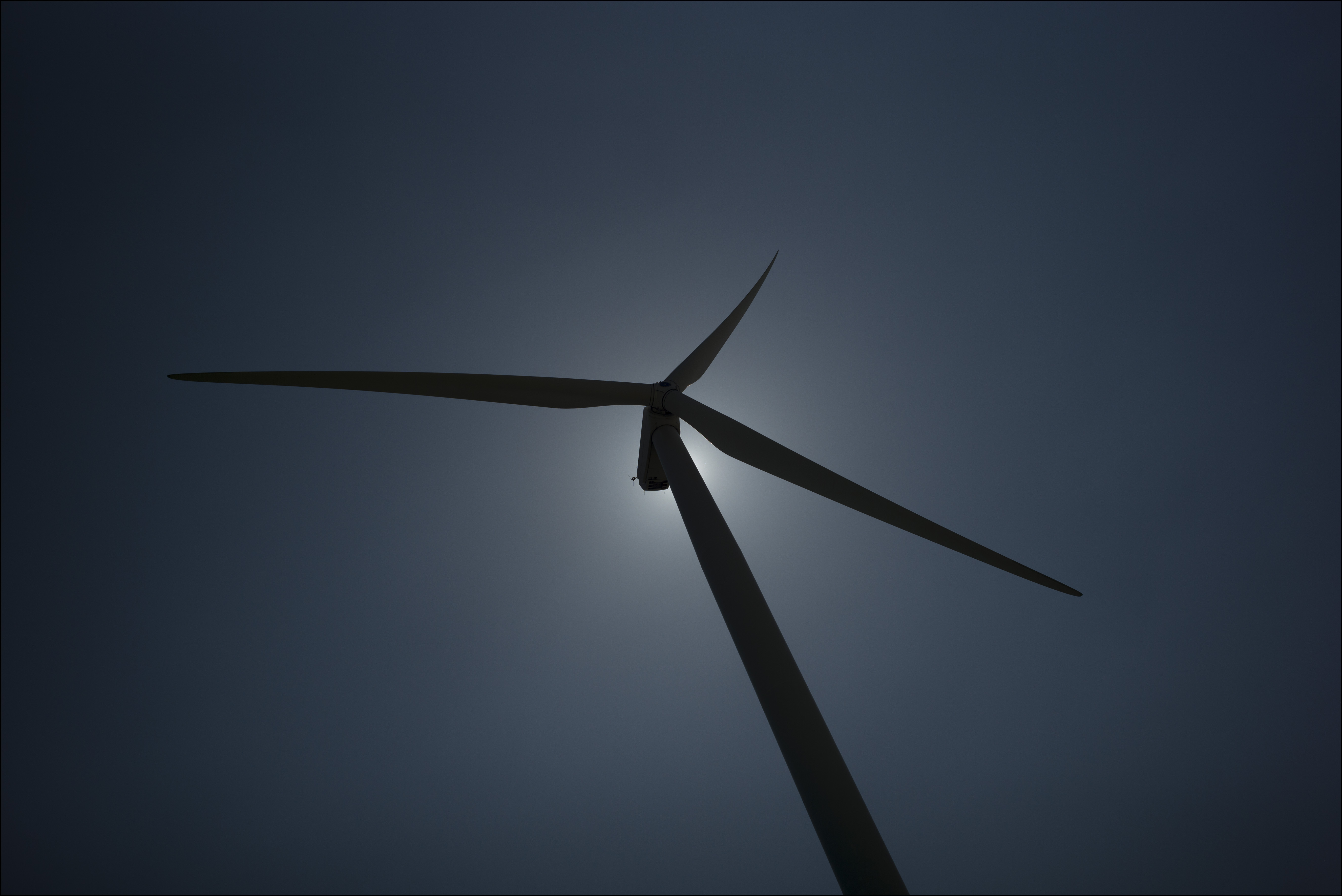What is wind?
Wind is air in circulation. When the sun shines, the air above the ground is heated up. Warm air rises and this leads to differences in pressure. There is a low pressure near the ground and higher pressure further up. The air will then circulate from high to low pressure to equalize. This moving air is wind. The wind is stronger further up from the ground. This is why wind turbines are placed at higher altitudes.
The Coriolis effect is an inertial force that affects moving objects at the Earth’s surface. This affects the movement of the wind. As the Earth rotates around its own axis, moving wind and water will be rotated 90 degrees to the right of the direction of movement on the Northern hemisphere. At the equator, the Coriolis effect is zero, and it increases towards the North and South poles.
Wind power is the kinetic energy in wind
This renewable energy source is created when wind turbines convert the kinetic energy in wind to electricity. When the wind reaches the turbine, the blades begin to rotate, which triggers the generation of electricity through the generator. As the supply of wind is not constant, the amount of electricity produced will vary according to the intensity and frequency of the wind. Therefore, it is important to place the wind turbines in areas with high average winds.
![iStock-160364739-[Converted]](https://tonstadvindpark.no/wp-content/uploads/iStock-160364739-Converted.png)
Power production in Norway
Norwegian power supply has the highest proportion of renewable energy (98%) and the lowest emissions in Europe. Norwegian power production consists of hydro-, wind- and thermal-power. Hydropower has been the backbone of Norwegian power production since the early utilization of energy in rivers and waterfalls in the late 1800s, and continues to be the main component of Norwegian power production today. This differs from most other countries in Europe, where thermal power production still dominates.
Even though wind power constitutes just under 3% of electricity production in Norway, wind power is the fastest-growing type of power production in Norway.
Read more here: https://energifaktanorge.no/en
The Power market in Norway
The Norwegian Energy Act is based upon the principle that the production and trading of electricity should be market-based. This ensures effective use of resources and reasonable market-driven prices on electricity. The transmission and distribution of electricity is a natural monopoly.
Norway is part of a Nordic power market with Sweden, Denmark and Finland. This Nordic power market is integrated into the wider European power market. 24 countries are interlinked in the European power market, which covers approximately 90% of European electricity consumption.
Power that is supplied to the grid is distributed in accordance to demand. A consumer who turns on the light cannot know who produced the power or how far it has been transported through the grid. The grid companies keep an overview of the amount of power delivered by each producer and the amount each end user consumes. This forms the basis for settlement: Producers are paid for the volume of power they deliver and end users in turn pay for their consumption.
Read more here: https://energifaktanorge.no/en/norsk-energiforsyning/kraftmarkedet/

The Norwegian Water Resources and Energy Directorate’s (NVE) suggestion for a national framework for onshore wind farms
In 2017 the Ministry for Oil and Energy gave NVE the task of drafting a suggestion for a national framework for onshore wind farms. The reason for this is that the government wishes to facilitate the sustainable development of profitable wind power in Norway. This is in accordance with the white paper for energy, Meld St 25 (2015-2016).
The suggestion was submitted to The Ministry of Oil and Energy on 1st April 2019. The report provides a knowledge base of consequences of onshore wind farms and a map that defines 13 areas that are deemed suitable for profitable onshore wind power. The areas are chosen based on wind resources and network capacity, and are weighted against environmental- and societal concerns.
Among the 13 areas, Sirdal and Flekkefjord municipalities are included, the areas in which Tonstad Vindpark is under construction. In the report, it is written: “From a domestic perspective, the identified area is deemed to be one of the most suitable areas for new wind power development in Norway.” (Page 175) Read the report (in Norwegian) here: http://publikasjoner.nve.no/rapport/2019/rapport2019_12.pdf

Wind and Hydro
The largest proportion of future growth in renewable energy will come from non-dispatchable energy sources such as wind power. The amount of energy generated is dependent on the wind. This variable amount of energy is usually consumed straight away and supplemented by energy from dispatchable hydropower when the energy generated from wind is insufficient to supply the demand in the market. An increase in non-dispatchable energy will mean increased need for balancing services in the power market.
Norway has some of the best wind resources in the world. The increased focus on further developing wind farms in Norway, will release large amounts of power for export to Europe. This means that wind power in Norway can help countries in Europe reduce their emissions, while contributing to increasing the value of the hydropower produced in Norway.
Local renewable energy hub
Tonstad Hydropower plant, a part of Sira-Kvina Power plant, is the largest hydropower plant in Norway when measured in annual production, with installed effect of 960MW. Read more (in Norwegian) at: https://www.sirakvina.no/
In combination with other power plants in East- and Vest-Agder, the energy generated from the Tonstad wind farm will contribute to the achievement of the goals in the Energy plan for the Agder counties. In the plan, the following is written: “In 2020, Agder aims to have the position as an internationally leading region within climate-friendly production and distribution of renewable energy. This will happen through development of new renewable energy and the facilitation of power switching, which will give increased delivery of environmentally friendly energy to the continent. The export-oriented sector in Agder is perceived as a global role model through innovation in climate-friendly production processes and efficient energy usage. A consideration for climate is an overarching requirement in all regional and local societal decisions. Read more about the Agder energy plan here: https://www.vaf.no/media/1960948/energiplan_for_agder_c2qhr.pdf

